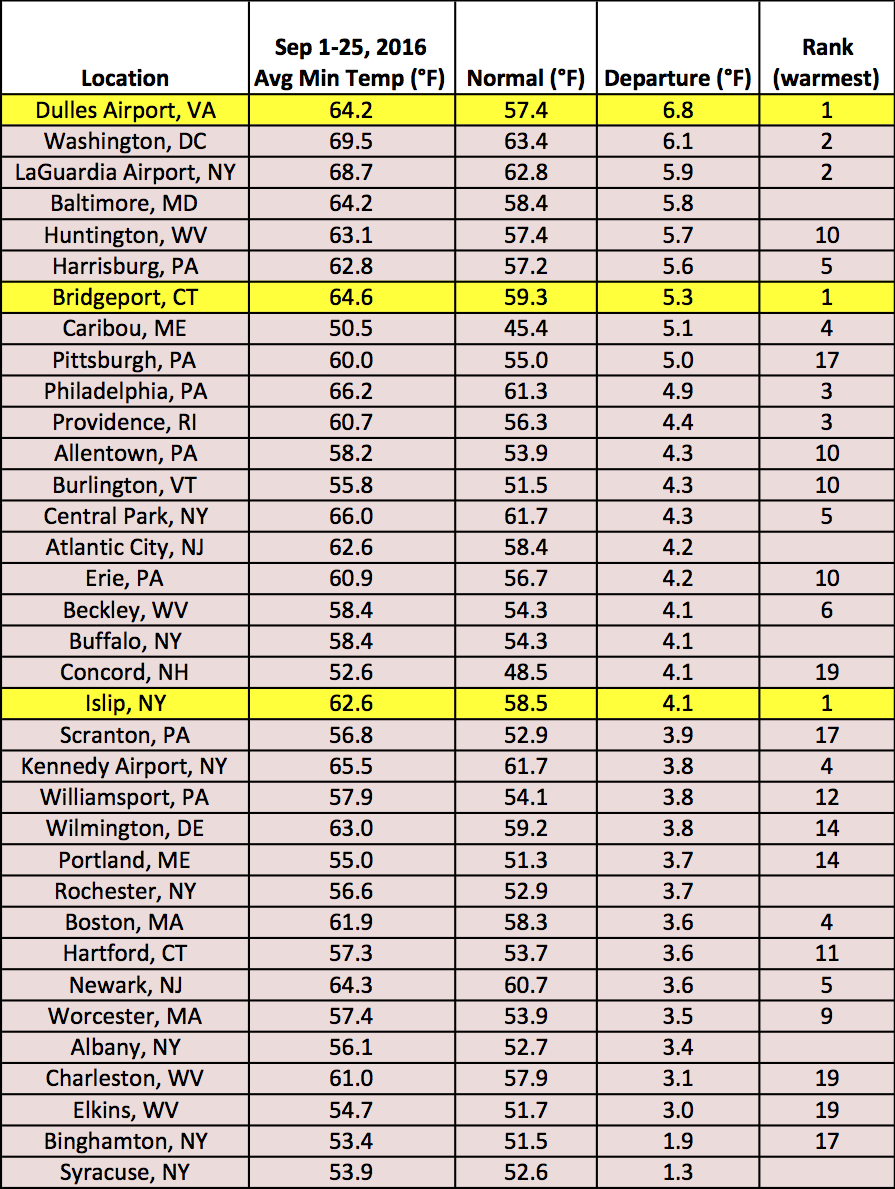Foliage Season
Temperature and precipitation are two factors that affect fall foliage. To get the most brilliant colors, the United States National Arboretum says you need “a growing season with ample moisture that is followed by a rather dry, cool, sunny autumn that is marked by warm days and cool but frostless nights.” Let’s break that down.
Fall foliage near Lake Placid, NY. Courtesy: Samantha Borisoff
First, some areas saw above-normal precipitation during the growing season, but other parts of the Northeast were (and continue to be) in a drought. According to NOAA, “Drought conditions during late summer and early fall can trigger an early “shutdown” of trees as they prepare for winter. This causes leaves to fall early from trees without reaching their full color potential.”
Second, so far this autumn (first 25 days of September) the Northeast has been dry. The region has also generally seen an abundance of warm, sunny days; however, other than a brief cool down, cool nights have been lacking.
Average minimum temperatures for the first 25 days of September ranged from 1°F to 7°F above normal.
The foliage season is just kicking off. Current conditions can be found via Yankee Magazine’s foliage map and The Foliage Network’s Northeast report, which covers Maine to Pennsylvania, and Southeast report, which covers the Mid-Atlantic.


